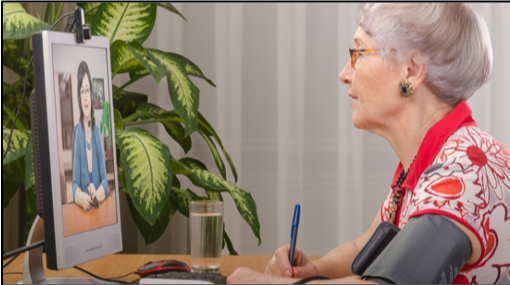The coronavirus legislation signed by President Donald Trump would let Medicare expand the use of telemedicine in outbreak areas, potentially reducing infection risks for vulnerable seniors.
By Associated Press, Wire Service Content March 6, 2020
BY RICARDO ALONSO-ZALDIVAR, Associated Press
WASHINGTON (AP) — The coronavirus legislation signed by President Donald Trump on Friday, March 6, 2020 lets Medicare expand the use of telemedicine in outbreak areas, potentially reducing infection risks for vulnerable seniors.

Coverage of telemedicine is now limited primarily to residents of rural areas facing long road trips for treatment from specialists. The law allows the government to waive those restrictions to help deal with the public health emergency created by the coronavirus outbreak.
It also could open the way for more lasting changes in Medicare’s coverage of virtual health care, including Skyping with the doctor or using devices that beam over measurements such as heart rate.
“Telehealth is really instrumental in containing and treating disease, particularly in a public health emergency,” said Megan O’Reilly, a lobbyist with AARP, the advocacy group for older people, which pushed for the telemedicine provisions. “For older Americans, this can help keep them safe.”
Scientists tracking the global respiratory disease outbreak have documented that coronavirus takes a higher toll on older people, on patients with multiple chronic conditions, and on those with compromised immune systems. Death rates are higher among older patients, while younger people are more likely to get a milder form of the illness.
To be clear, seniors who suspect they may have COVID-19 — the illness caused by the coronavirus — will still have to get tested physically, whether at a clinic or their doctor’s office.
Telemedicine cannot take the place of a swab of the throat to collect a sample for scientific testing. But it can help doctors make special arrangements to safely receive a patient who is sick and suspects the virus may be involved.
Perhaps even more important, telemedicine would offer a way for Medicare recipients in outbreak areas to take care of ongoing medical issues without having to go to the doctor’s office and risk coming into contact with someone who is sick. Many seniors have several doctors’ appointments every month.
Like the rest of the $8.3 billion coronavirus response bill, the telemedicine provisions were the result of a bipartisan effort by Democratic and Republican lawmakers in both chambers of Congress. “This will give seniors greater access to their health care providers without leaving home,” said Sen. Ron Wyden, D-Ore., a longtime telemedicine advocate who helped shoehorn the provisions into the coronavirus bill.
Seema Verma, head of the Centers for Medicare and Medicaid Services, has said she wants to find ways to focus government assistance on the people deemed most vulnerable. But her agency has not yet said how it would use its newly granted waiver authority.
To protect seniors from scams, the legislation requires that the doctor’s office billing for a telehealth visit have an established, ongoing relationship with the patient. And communication must take place through a two-way interactive video and voice link.
If telemedicine shows its worth in the coronavirus outbreak, that could lead to permanent changes making it more widely available to seniors. “While this law applies to the current public health emergency, we’ll continue to work on expanding the use of telehealth so that every American has access,” said Sen. Brian Schatz, D-Hawaii, who also worked on the provision.
Medicare is the government’s flagship health insurance program, covering about 60 million people age 65 and over, as well as younger people who qualify because of a disability. Medicare Advantage plans offered by private insurers have been allowed to offer telemedicine as a supplemental benefit like dental coverage or a gym membership for several years now, said Gretchen Jacobson, vice president for Medicare at the Commonwealth Fund think tank.
The new telemedicine waivers would most benefit the roughly two-thirds of Medicare recipients in the traditional program. Overall, telemedicine has grown steadily in recent years. Most mid-size or large employers now offer some way to connect patients and health care providers virtually. But researchers say patients have been relatively slow to try telemedicine, especially if they are used to in-person visits.








